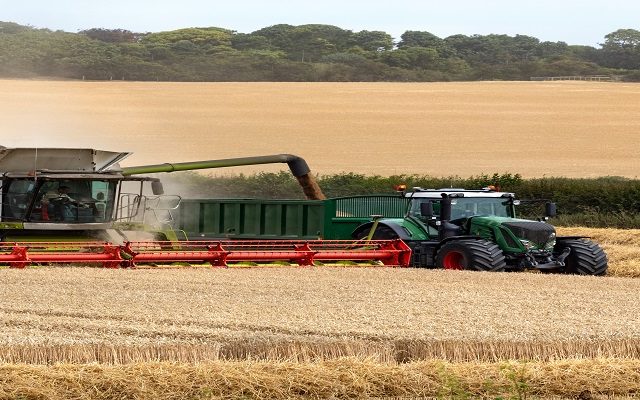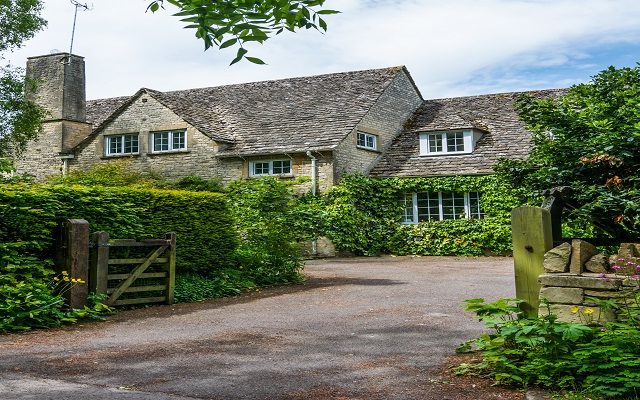New modelling shows impact of IHT reforms on profitability
The window is narrowing for farms and estate businesses to prepare for forthcoming inheritance tax (IHT) reforms, with new analysis highlighting the impact on farm profitability for farms of different sizes and performance levels.
The draft Finance Bill confirmed changes to Agricultural Property Relief (APR) and Business Property Relief (BPR), due to take effect from April 2026 (see summary below).
Speculation is also growing that the Autumn Budget on 26 November may bring further reforms, possibly including adjustments to Potentially Exempt Transfers (often referred to as PETs) and allowances.
Modelling the impact
Strutt & Parker has produced new analysis which highlights that many farms are already under financial pressure, squeezed by the effects of climate change and the loss of Basic Payments. Even with the option to spread IHT liabilities over ten years, affordability remains a live question.
Looking at Farm Business Survey data, we find that around half of English farms are currently operating at economically unsustainable levels. We set the benchmark at a £34,500 annual profit for a 140ha farm – equivalent to the UK’s median household income, or around £250/ha. This figure represents the minimum needed to support owners and reinvest in the business. Of course, for some, more may be required, while others may manage with less.
Our modelling assumes farmers will use some of the most straightforward tax-planning steps – such as dividing assets between spouses, restructuring wills to secure APR/BPR relief, and making lifetime gifts. Yet even with these measures, annual IHT liabilities for farms making typical amounts of profit (i.e., in the middle 50% of performance) could still range from 44% to 124% of annual profits.
| Small | Medium | Large | Very large | |
| ~ 67 ha | ~ 149 ha | ~ 221 ha | ~ 380 ha | |
| Net worth | £3,200,000 | £4,030,000 | £5,460,000 | £8,840,000 |
| IHT liability (pre-planning) | £40,000 | £280,000 | £560,000 | £1,240,000 |
| IHT liability (post-planning) | £0 | £90,000 | £290,000 | £690,000 |
| Annual IHT liability (10 YEARS) | £0 | £9,500 | £28,800 | £68,500 |
| Profits NO BASIC PAYMENTS | £9,700 | £21,600 | £32,100 | £55,200 |
| IHT liability (post) as % of profits | 0% | 44% | 90% | 124% |
| IHT liability (post) as % of worth | 0% | 2% | 5% | 8% |
The analysis also indicates that while larger farms may face higher liabilities – since allowances have a smaller relative impact – affordability is strongly influenced by overall business performance. For instance, a very large farm performing around the industry average could face an IHT liability equivalent to 124% of profits, whereas a similarly sized farm in the top 25% might see a liability closer to 33% of profits.
| Low 25% performance band | Medium 25% performance band | Top 25% performance band | |||||||||||
| Small | Medium | Large | Very large | Small | Medium | Large | Very large | Small | Medium | Large | Very large | ||
| ~ 67 ha | ~ 149 ha | ~ 221 ha | ~ 380 ha | ~ 67 ha | ~ 149 ha | ~ 221 ha | ~ 380 ha | ~ 67 ha | ~ 149 ha | ~ 221 ha | ~ 380 ha | ||
| Net worh (£m) | Same as for medium | £3,200,000 | £4,030,000 | £5,460,000 | £8,840,000 | Same as for medium | |||||||
| IHT liability (pre-planning) | “ | £40,000 | £280,000 | £560,000 | £1,240,000 | “ | |||||||
| IHT liability (post-planning) | “ | £0 | £90,000 | £290,000 | £690,000 | “ | |||||||
| Annual IHT liability (10 YEARS) | £0 | £9,500 | £28,800 | £68,500 | £0 | £9,500 | £28,800 | £68,500 | 0 | £9,500 | £28,800 | £68,500 | |
| Profits NO BASIC PAYMENTS | -£19,200 | -£42,500 | -£63,200 | -£108,500 | £9,700 | £21,600 | £32,100 | £55,200 | £36,600 | £81,200 | £120,600 | £207,200 | |
| IHT liability (post) as % of profits | Liability greater than profits | 0% | 44% | 90% | 124% | 0% | 12% | 24% | 33% | ||||
| IHT liability (post) as % of worth | Same as for medium | 0% | 2% | 5% | 8% | Same as for medium | |||||||
What this means for you
The priority is gaining a clear understanding of your current position. This starts with obtaining a comprehensive, accurate valuation of your land, machinery, livestock, and other assets from a RICS-registered valuer. While stocktaking valuations were often relied upon in the past, because the value of those assets would be covered entirely by the BPR relief, that may no longer be the case. Knowing the accurate market value is more important than ever.
Working alongside your accountant and legal advisers, it is then possible to explore a range of strategies. This could involve restructuring businesses or trusts, making lifetime gifts, reviewing insurance options, or taking advantage of reliefs such as the Conditional Exemption Tax Incentive.
Succession planning is about more than tax alone. Affordability and the long-term resilience of the business are equally crucial. A farm business review can help benchmark performance, challenge assumptions, and identify a realistic path forward for improving financial performance and achieving growth.
Our experience is that higher-performing farmers don’t always have the best soils or the largest farm. What sets them apart is their attitude and management style. Common traits include:
- A willingness to adapt and embrace change
- Attention to detail in monitoring and decision-making
- Clear communication and alignment across the business team
- A continuous focus on improvement and efficiency
- An accurate and up-to-date understanding of the running costs within their business
Ultimately, the most important question is: what does success look like for you and your family in five years’ time? Decisions will be shaped by practical factors, including workload, skills, experience, family dynamics, and quality of life.
The goal is to find solutions that address both tax and profitability challenges without creating unintended complications elsewhere – ensuring your farm or estate business is well-positioned for the future.
- If you’d like to discuss how we can help you prepare for the future, contact Nick Watson, Head of Private Client.
SUMMARY OF IHT REFORMS
- From 6 April 2026, only the first £1m of qualifying property (per individual or trust) will attract 100% APR and/or BPR. Anything above will be eligible for 50% relief, with any chargeable transfers made within seven years of death counting towards the £1m cap.
- The £1m allowance will rise in line with the Consumer Prices Index (CPI), but not before April 2030.
- An option to pay IHT in 10 equal annual, interest-free instalments.
- A limit of one £1m trust relief allowance across property settled into trusts by the same person on or after 30 October 2024.
- BPR on shares traded on recognised but unlisted markets (such as AIM) reduced from 100% to 50%.
- From April 2027, pensions will be included as part of an estate for IHT purposes.






